21 Facts About The Micro Sheepadoodle
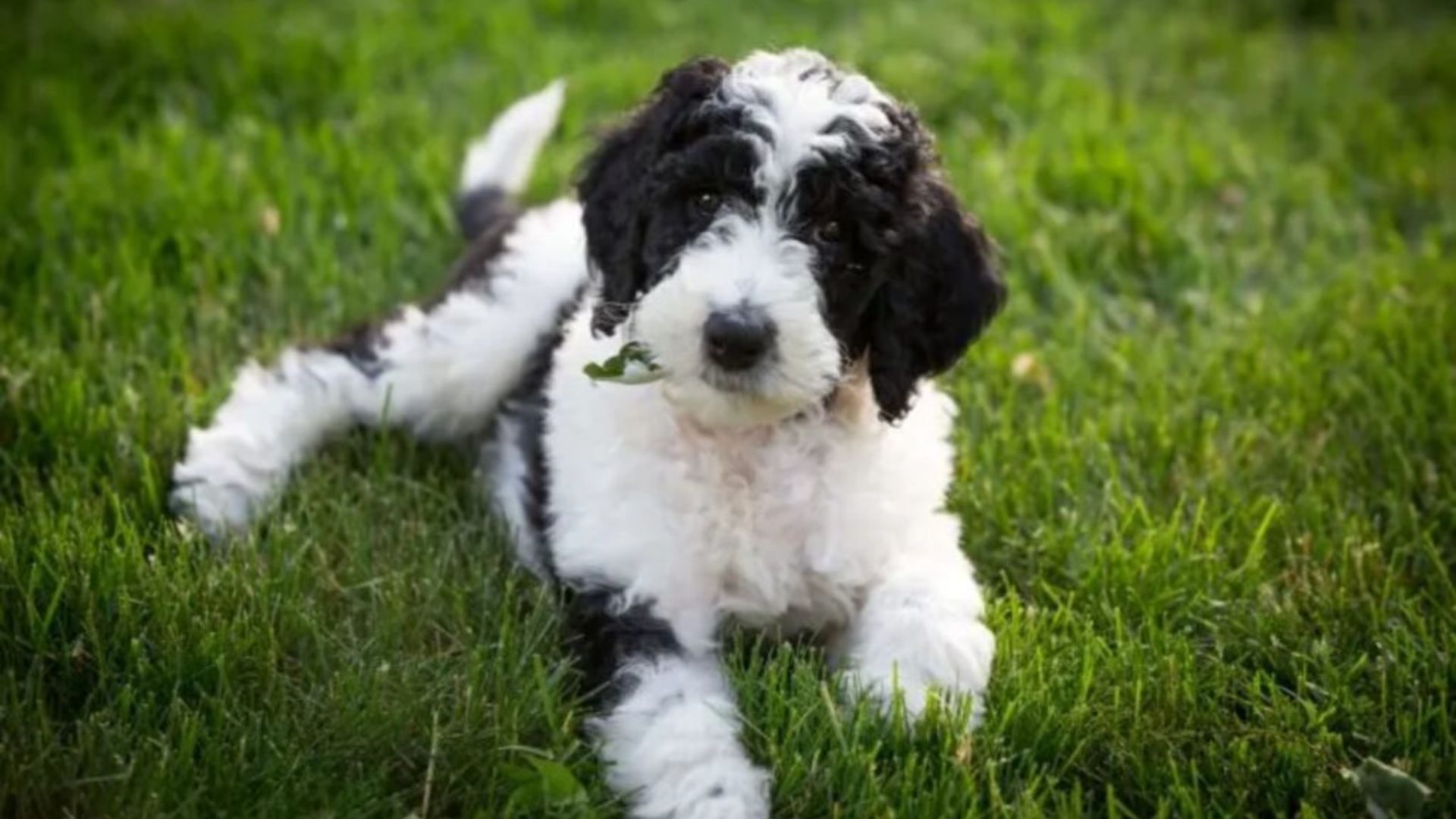
Some of the most popular crossbreeds, the Labradoodle and the Goldendoodle, finally got an equal rival: the micro sheepadoodle. Hardly any breed can top this adorably looking teddy bear face. There’s a huge craze for this stunning dog breed.
The reason behind the micro-doodle mania lies in the fact this crossbreed has one unique personality. They’re caring, loving, and absolutely amazing. A perfect dog choice you can’t go wrong with.
But, what are these doodles actually like? Is the whole hype justified? How did we even get such a marvelous furry friend? Let’s start the story from the beginning…Where else?
1. How The Micro Sheepadoodle Was Born
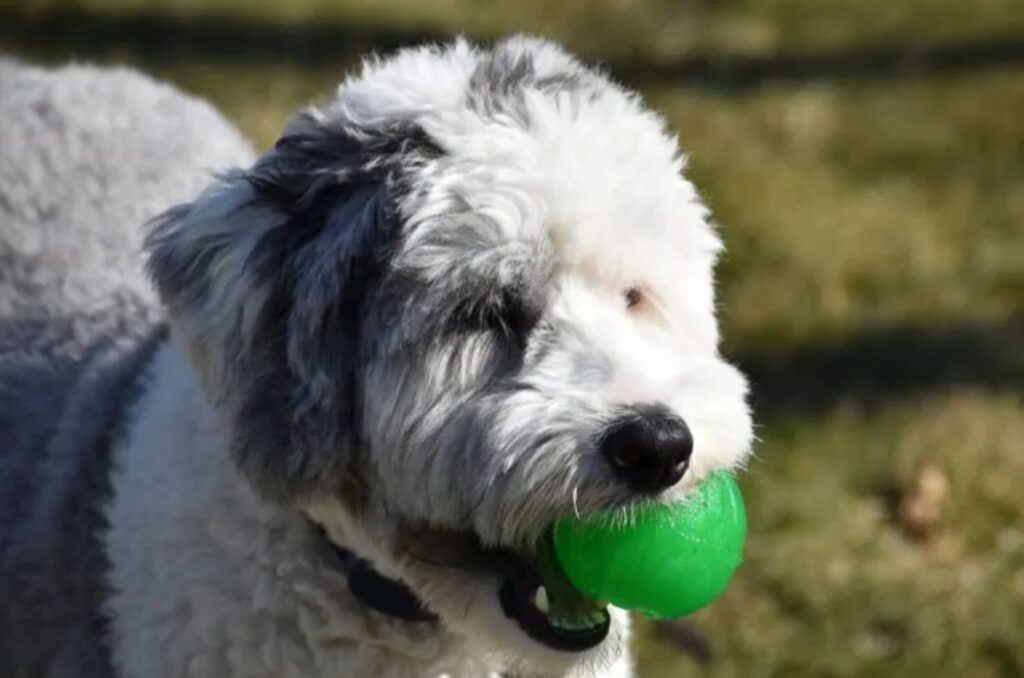
Credit: Shutterstock
When the Old English Sheepdog met the standard poodle, it was love at first sight. These two beloved breeds created one utterly adorable puppy today known as the micro sheepadoodle.
To understand the mini sheepadoodle, we have to go back to basics and get to know his parents.
Why breed the English sheepdog and the miniature or toy poodle?
The OES became popular in the 1800s. They were primarily used as herding dogs helping to control other animals on the farm. They are an intelligent breed, extremely active, and a true example of the sheepdog breed.
Interestingly enough, the poodle was originally bred in Germany to help hunt waterfowl. Thanks to their compact size, many dog breeders decided to mix this breed with others as an experiment. Thus, the sheepadoodle was born!
The best of both worlds, the sheepdog’s activeness and intelligence and the poodle’s friendliness and low shedding, are what make the miniature sheepadoodle so special.
2. What’s A Micro Sheepadoodle?
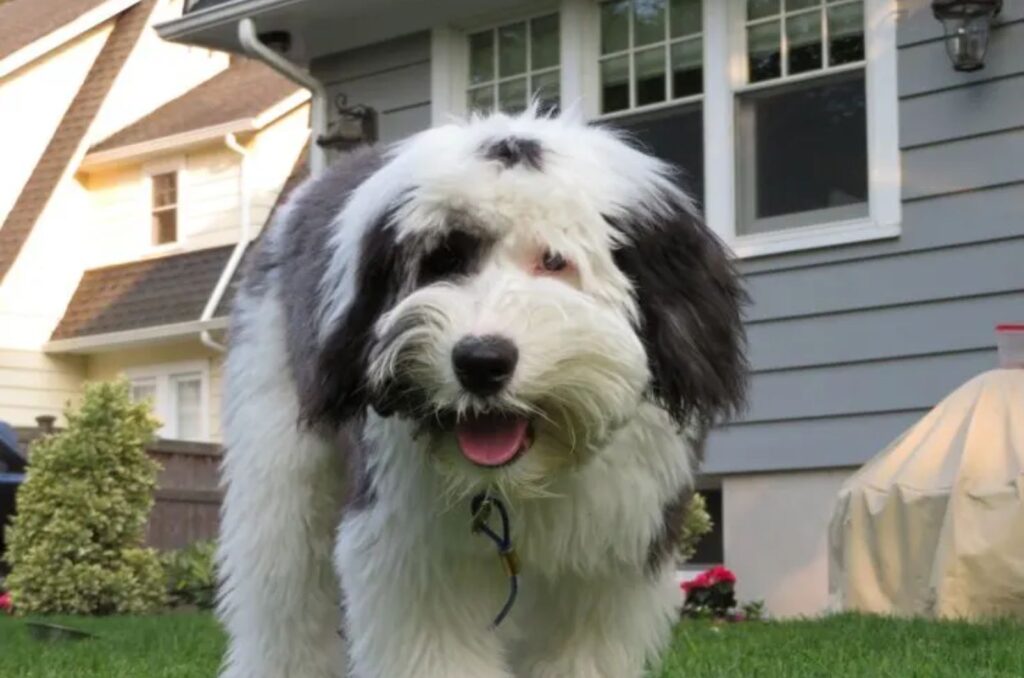
Credit: Shutterstock
As mentioned before, the micro sheepdoodle is a cross between an OES and a standard poodle. One letter can make a huge difference. Make sure you don’t mix up the sheepadoodle with the shepadoodle (a shepherd poodle mix).
These adorable panda-like cuddle pups come in four different types: F1 sheepadoodle, F1b sheepadoodle , F2 sheepadoodle, and mini sheepadoodle.
The F1 mini sheepadoodle results from breeding a purebred old English sheepdog and a purebred Standard Poodle.
When an OES breeds with an F1 sheepadoodle, we get the F1b sheepadoodle.
F2 sheepadoodles are the result of breeding two F1s. This breed is generally less expensive.
The mini sheepadoodle is a mixture of an OES and a miniature poodle. This is a hypoallergenic dog, quite small, and weighs no more than 45 pounds.
3. General Traits Of The Standard, Mini, And Micro Sheepadoodle

Credit: Shutterstock
The standard sheepadoodle is created when you breed a standard poodle and an OES, or the standard sheepadoodle to a sheepadoodle. For the finest offspring, it is best to own both parents so one can verify their origin.
The standard doodles can weigh up to 60 pounds and grow 22 inches tall. Everything about this dog is big, even its heart.
A slightly smaller doodle is a mixture of a medium poodle and an OES. The mini weighs less than 55 pounds, and it’s smaller than 22 inches in height. It’s the perfect size for a family dog.
Lastly, the micro doodle weighs less than 30 pounds and can’t grow over 14–19 inches. It’s the perfect small dog for those who love to travel with their furry companion.
4. How Do You Spot A Miniature Sheepadoodle?
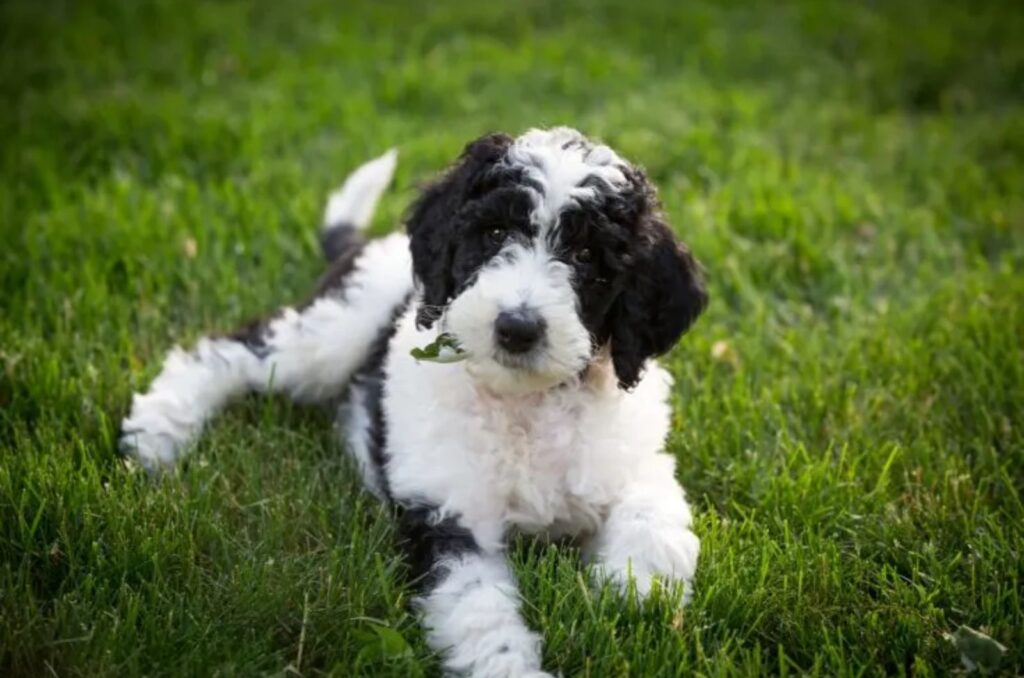
Credit: Shutterstock
The bigger the parents, the bigger your mini sheepadoodle puppy will be. The standard sheepadoodle weighs somewhere between 45 to 80 pounds and can grow to be 13 to 28 inches tall.
These dogs have a solid and sturdy build with a round or square face. There’s an elongation at the nose, and the head is broad and appears to be dome-shaped.
The signature feature of this breed is the big, low-hanging ears. Their eyes are small and set between medium-length hair.
The micro mini sheepadoodle can have curly or straight hair, sometimes even so long it covers their eyes. This will be a good sign to cut the hair so you don’t have a miniature sheepadoodle hole shape in your front door.
All sheepdoodles, except the brindles, are born with a black and white puppy coat. As they grow older, the puppy coat changes a few times. When the puppy coat disappears, you’ll see some grey showing up at about 6–7 months.
The change is usually noticeable around the back legs and across the shoulders. This is called the junior coat, and it is light grey. The coat will change up until the pups reach 2 or 3 years of age.
In addition, the mini sheepadoodle can be merle blue, white and red, brown or grey, much like the bernedoodle, but such cases are quite rare.
What’s not rare is the amount of cuteness these dogs have built inside them. They’re like teddy bears in the world of dogs, snuggly and cuddly!
5. Is The Micro Sheepapoo The Right Dog For Me?
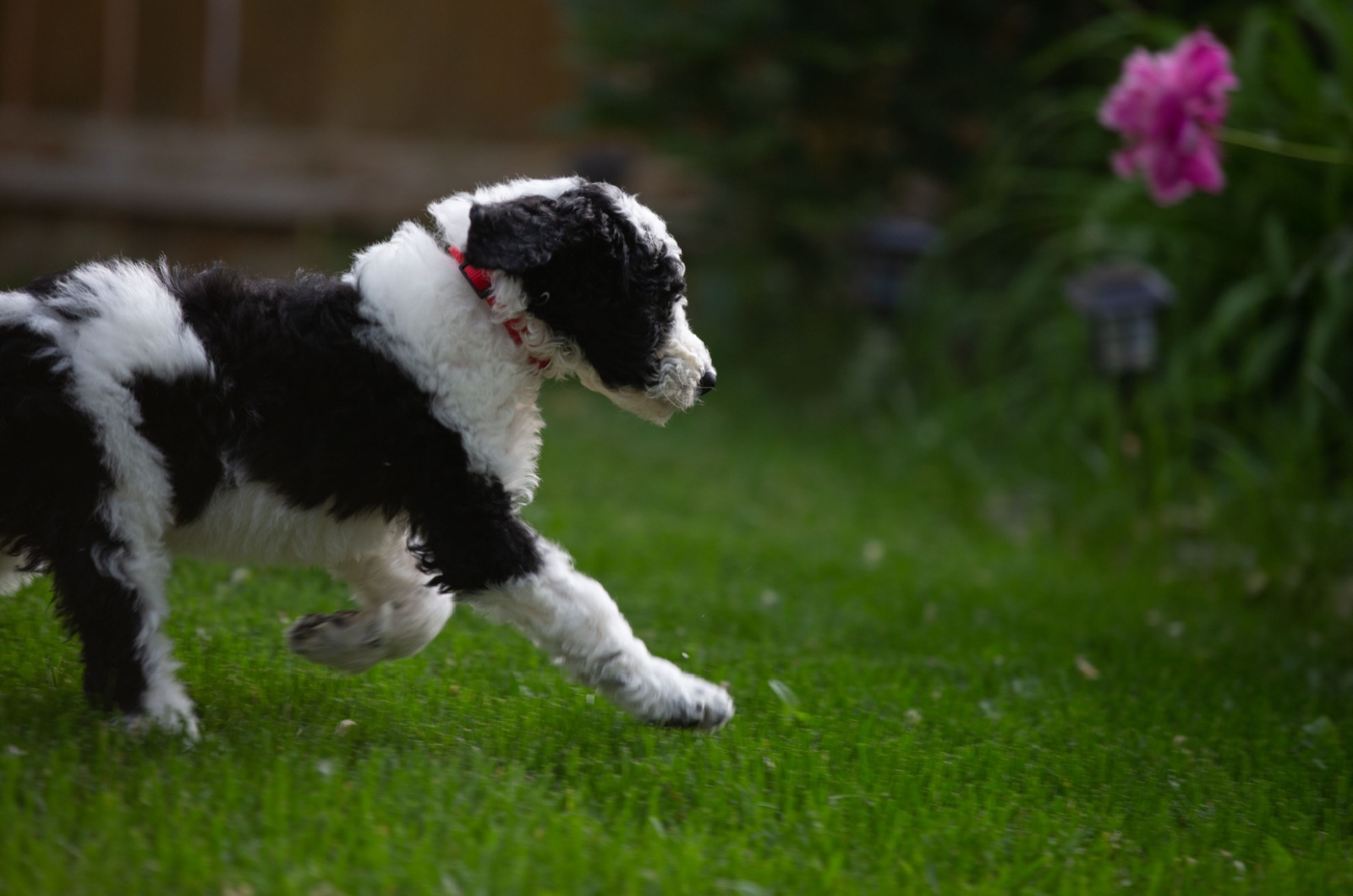
Credit: Shutterstock
High intelligence, friendliness, adorable looks, and general kindness help the micro sheepapoo stand out among many designer dogs. It seems like this is the perfect pet for you, doesn’t it?
Well, first you should learn about their temperament, and then make a decision. Owning a pet is a big responsibility, so don’t take it for granted.
The micro sheepadoodles are among the top five choices for a family dog. These dogs are calm, friendly, obedient, and love plenty of socialization.
Families with babies and small children don’t have to worry about this dog adapting to the rest of the family. The sheepdoodle is a gentle pooch who loves showing affection. You’ll never have to worry about not getting a warm welcome when you arrive home.
However, the fact that sheepadoodles are so calm and affectionate doesn’t mean they’ll go through anything for your love. Never leave them home alone for several days at a time. If they can’t travel with you, look for a puppy hotel or ask a friend to dog-sit.
All in all, there’s no good reason why you shouldn’t get this dog, right?
6. Are Micro Sheepapoos House Or Apartment Dogs?
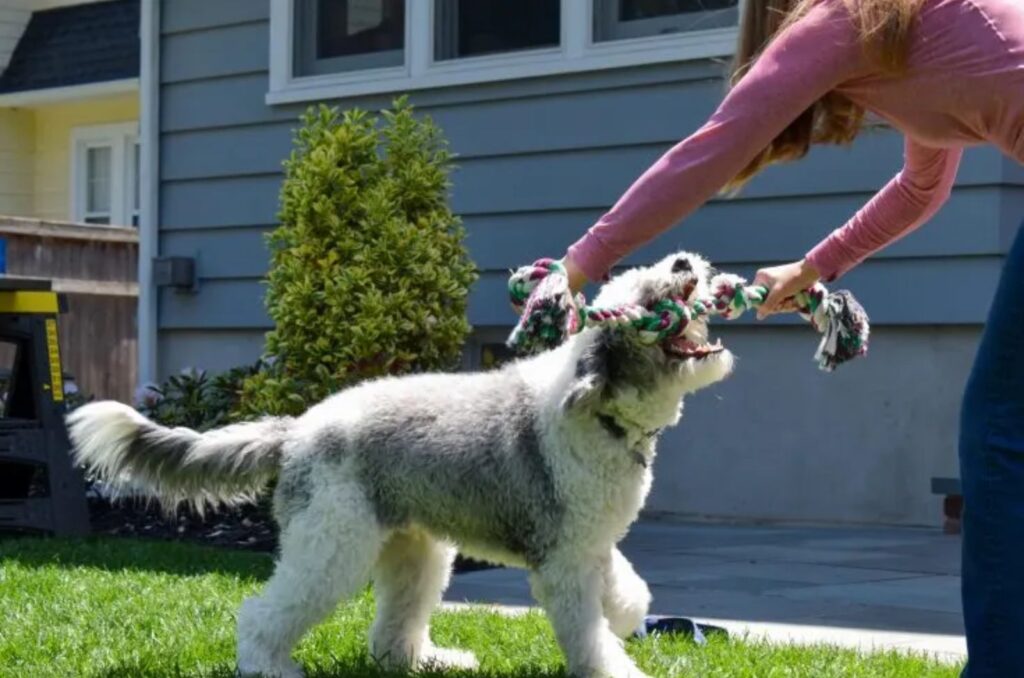
Credit: Shutterstock
Good news! The sheepdoodle isn’t exclusive to a house or apartment. These dogs are big, but living in an apartment doesn’t pose a problem. Just give them plenty of exercise, and they’ll be fine.
Of course, living in a house with a big yard is the best option. Still, that doesn’t mean the dog will exercise alone. Get up and go work out together. Your dog will be in shape, but you’ll also work on it being a well-socialized pup.
7. How Healthy Is This Crossbreed?

Credit: Shutterstock
The sheepadoodle is a hefty dog coming from two purebred dogs.
They seem to have good health and not many problems. When a puppy is of a better health condition than its parent, that situation is called hybrid vigor.
Still, like all other dog breeds, the sheepadoodle does have some minor health issues: bloating, joint swelling and pain, Cushing or Addison disease, and some types of cancer. A regular visit to the vet’s office could save a life!
8. Will We Be Buddies For Long?

Credit: Shutterstock
Designer dogs usually have a longer lifespan than their parents. However, their lifespan still depends on the traits the parents passed on to them. Genes play the biggest role in calculating a dog’s lifespan.
The parent with the greater genetic influence will affect the lifetime of the puppy. In this case, the mini poodle dog has a life span greater than the OES. The minis live somewhere from 12 to 15 years. That beats the 10 to 12 that sheepdogs live.
The final result of this battle of the genes is an amazing 12 to 17 years for the micro-mini sheepadoodle. Bear in mind this is a large dog breed, and they usually have a shorter life span.
You will have plenty of time to enjoy the true friendship!
9. Can People With Allergies Own A Micro Sheepadoodle?

Credit: Shutterstock
Surprisingly, the answer is YES. Most sheepadoodles are hypoallergenic, but it still depends on the genes they inherit from their parents.
How can you recognize a hypoallergenic sheepadoodle?
Other than asking your sheepadoodle breeder, the hypoallergenic dogs are noticeable for the curly coat. Thank you, poodle!
Therefore, this breed doesn’t shed and requires minimal grooming. Your allergy trigger will stay unalarmed.
10. Do I Still Have To Groom My Sheepadoodle?

Credit: Shutterstock
As we mentioned in the previous paragraph, minimal grooming is required.
These dogs don’t shed, but they can still have a matted coat. So, once a week, grab that brush and get rid of any knots or matted parts from the hair. Matts can be very painful, and no one wants their dog to live with them.
Thankfully, you won’t have a house full of dog hair, but you still have to take care of your pet. Some say daily brushing for 30–40 minutes is a must, but that’s up to you. No one really needs that much brushing anyway.
See how gorgeous their ears are? Well, they won’t stay gorgeous if you don’t clean them.
Built-up wax and dirt can cause infections and, eventually, hearing problems. What makes cleaning their ears easier is to trim the hair around their ears. A pro tip worth a fortune!
11. What Does A Standard Sheepadoodle Eat?
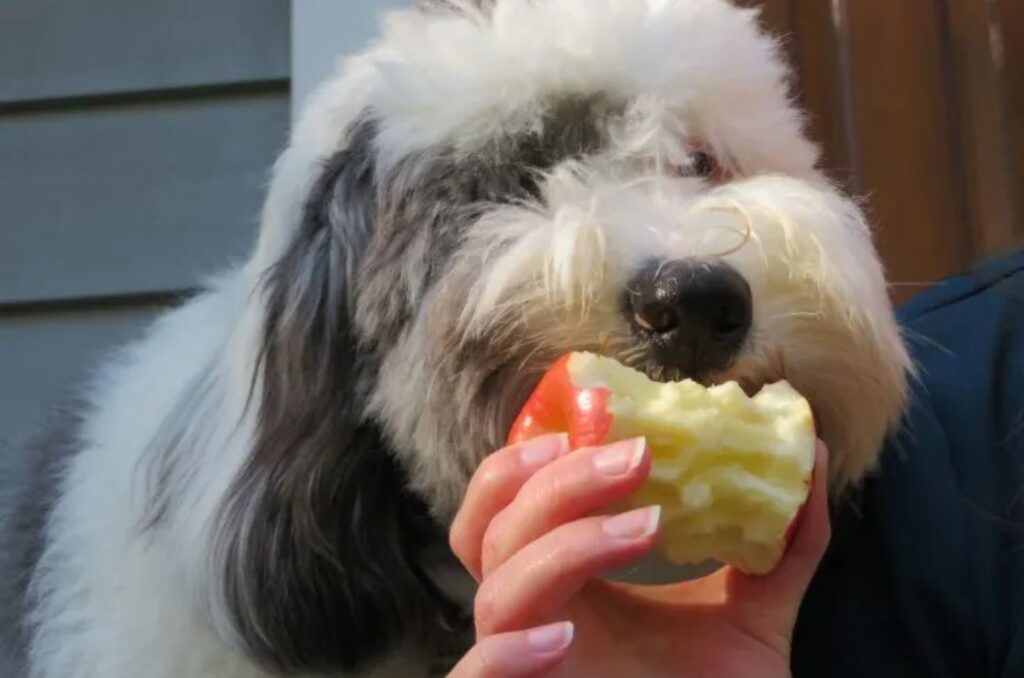
Credit: Shutterstock
The micro spends most of his day being active. Such dogs require frequent meals and quality kibble.
It would be best to feed the sheepadoodle 2–3 times a day. Use kibble rich in protein and good carbs, so the dog keeps on going.
Exclusively feeding the dog wet food is not a good option. Yes, a can once in a while is okay, but don’t let it dominate their diet. Too much wet food causes weight problems.
What’s not good either is to have food lying around the house at all times. The sheepadoodle is quite voracious and will go overboard when given too much food.
Control their meals since an overweight pup means more health problems. Also, feel free to adjust the portion sizes as needed; add food or cut down the kibble quantity depending on the dog’s weight.
12. How To Train Your Dragon… Oops, Your Micro Sheepdoodle!
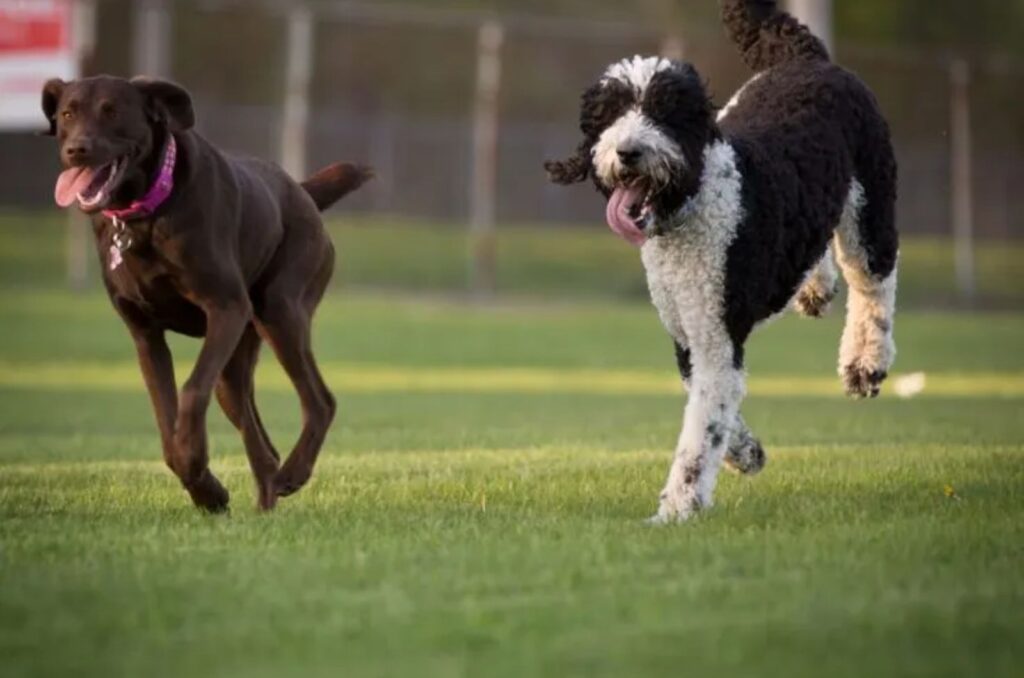
Credit: Shutterstock
All jokes aside, the sheepadoodle is a delight to train.
This pooch is highly obedient and a fast learner too. He will always look for approval from its owner.
Training should start at an early age. This way, you’ll mold the perfect dog for your family. Socialization is the key to ultimate success, along with positive reinforcement.
Sheepadoodles can be trained as a watchdog. They will recognize strangers and bark at them. However, no matter how good of a watchdog yours will be, he will always be gentle to family members, especially kids.
Who wouldn’t love to have such a protector?!
13. Is This Dog Breed Recognized By Any Organization?
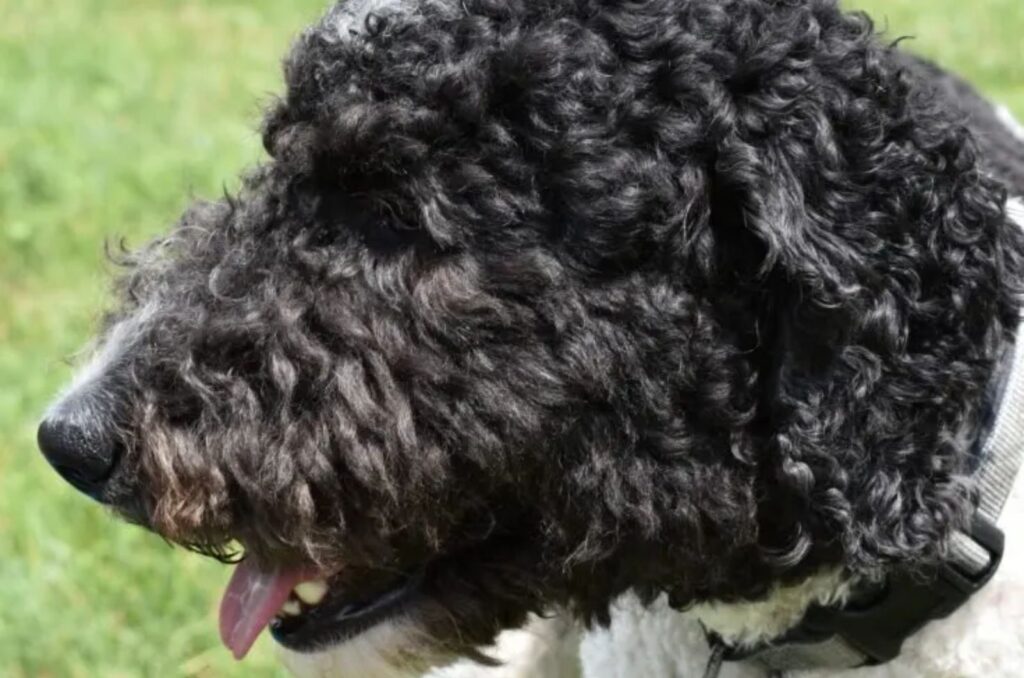
Credit: Shutterstock
The American Kennel Club, aka the AKC, only allows purebred dogs to be registered with their association.
Since the sheepadoodle is a crossbreed, it’s not allowed in the AKC.
Still, some organizations welcome designer dogs such as: the DRA (Dog Registry of America), the ACHC (American Canine Hybrid Club), and the IDRC (International Designer Canine Registry).
14. How Much Do Mini Sheepapoo Puppies Cost?
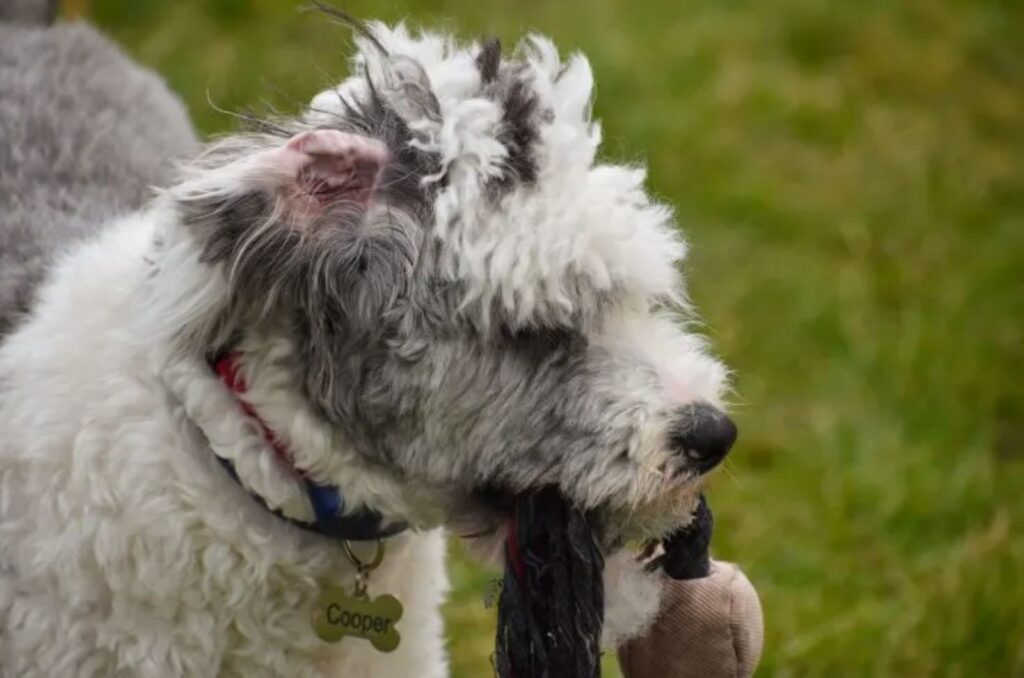
Credit: Shutterstock
Mini sheepadoodle puppies are on the expensive side.
If you want one desperately, you will have to spend $1,000 to $3,000. The price will jump even higher for specific requests like coat color and especially eye color.
But, when you want something so badly, price is not important, right?
15. Where Can I Get One Of These Pooches?
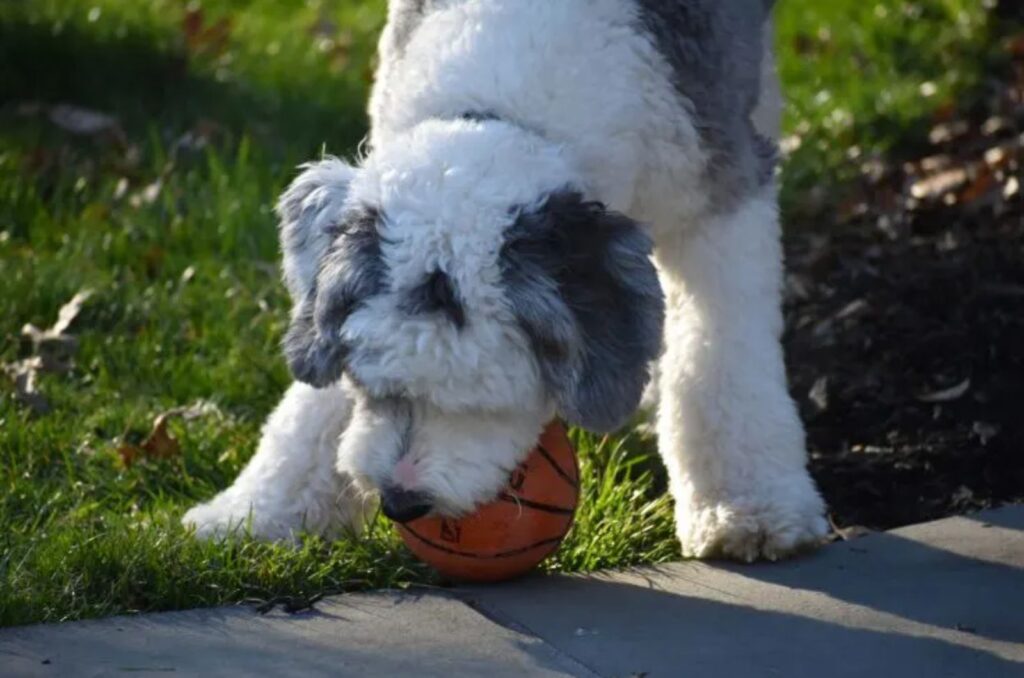
Credit: Shutterstock
The answer is: all over the Internet.
Nowadays, the Internet is full of websites specially designed to breed and sell mini sheepadoodle puppies.
Also, Petfinder could have sheepadoodles sometimes, do make sure you don’t forget about those guys!
16. Rescuing Or Buying, Which Is The Way To Go?

Credit: Shutterstock
No matter how strongly we stand with rescuing dogs, this time, we have got to say: It’s up to you.
Yes, rescuing is always a good idea. You’ll save lots of money, and you will save a dog from living in a shelter. Not many things can top that, for sure!
However, if you can’t wait to run your hands through this soft fur, look for micro sheepadoodles for sale, but only from a trusted buyer.
NEVER buy from backyard breeders!
See if you can visit the breeding premises, meet the dog’s parents, and check out how the breeders take care of the litter. If everything seems to be alright with you, then there’s no reason why you shouldn’t buy from them immediately.
Okay, other than the long waiting list, so make sure you sign up for a puppy in time. Many breeders run their websites and post their puppy schedules online. You can sign up on the waitlist for any of the upcoming litters throughout the year. Just pick the dog parents you like the most.
17. Are There Any Cons To Getting A Sheepadoodle?
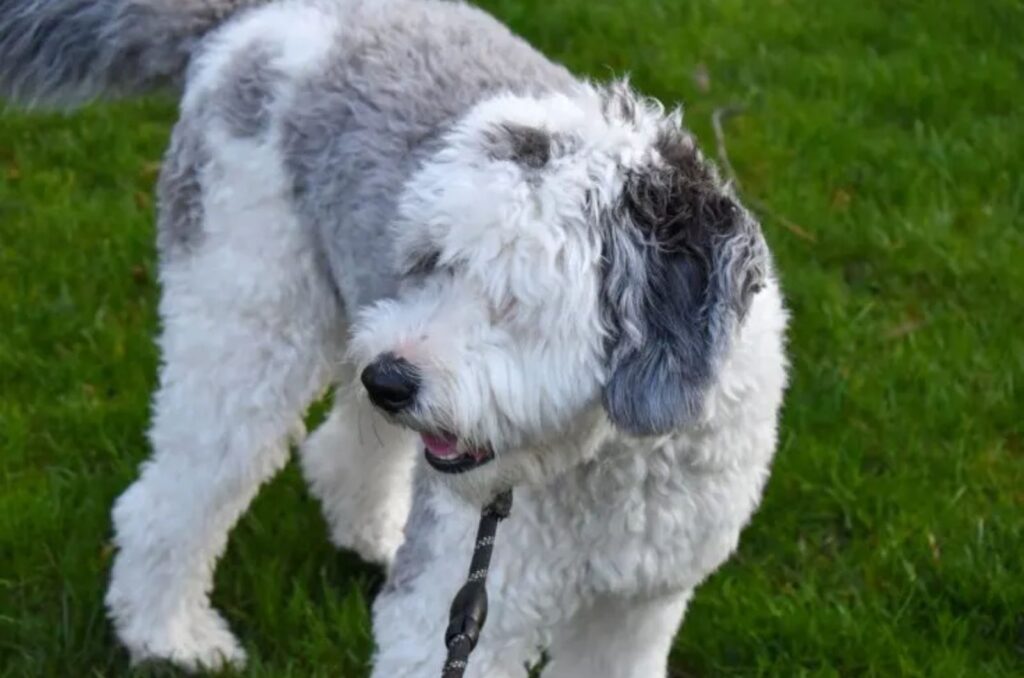
Credit: Shutterstock
Sadly, there are some things that might bother you.
There’s no dog breed that’s suitable for everyone.
Here are some cons you should know about: their grooming can be extensive and cost a lot, they nip and herd anything, hence the nickname “land sharks”, they’re very expensive, and they have lots of extra energy.
18. Cute And Extremely Cuddly

With their fluffy coats and sweet expressions, Micro Sheepadoodles are the definition of cute and cuddly. Their loving nature makes them perfect for snuggling, and they’re always eager to shower you with affection. It’s hard to resist their charm, making them the ultimate lap dog and companion.
19. They Need A Lot Of Mental Stimulation
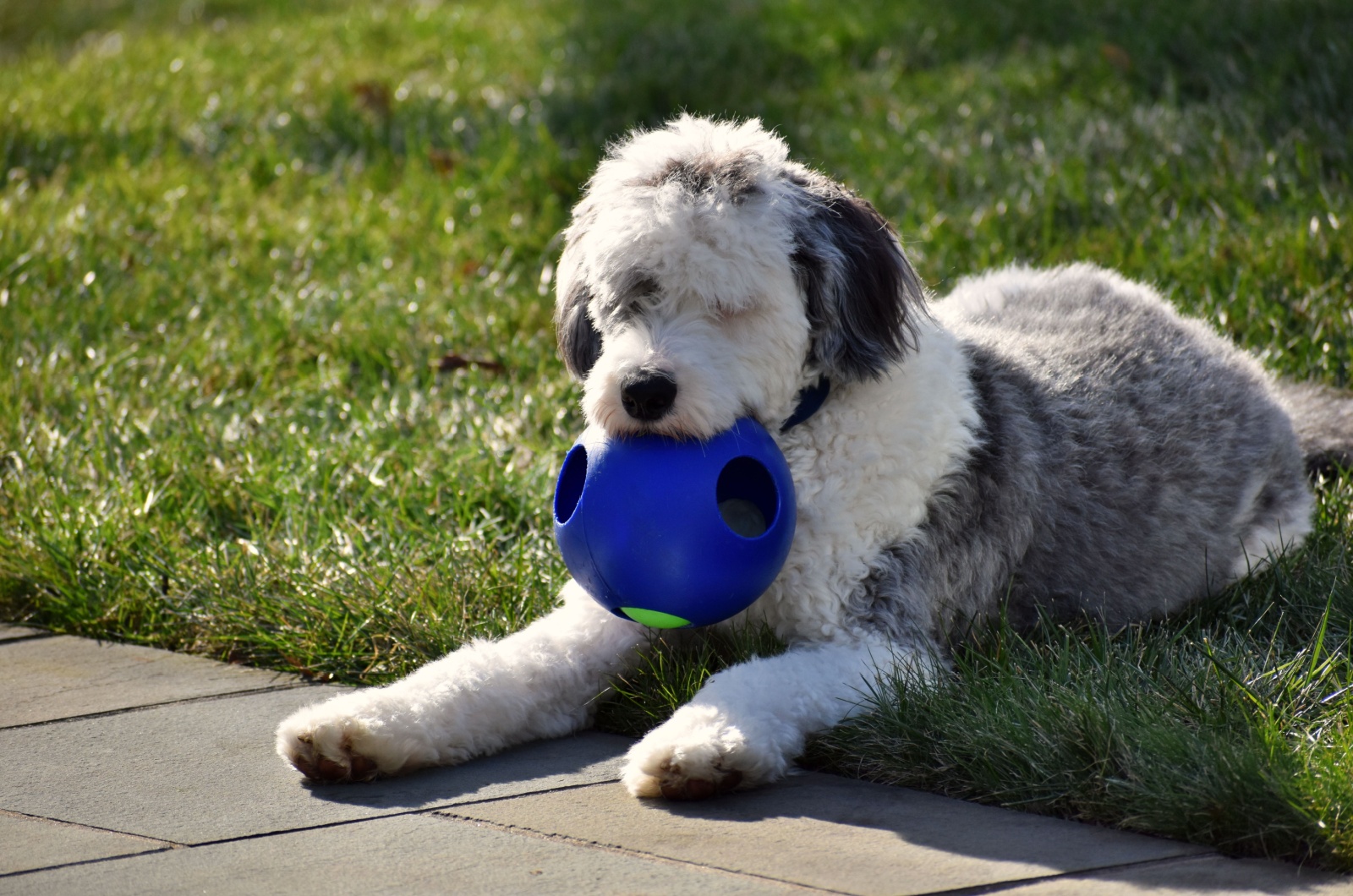
Credit: Shutterstock
Micro Sheepadoodles are smart dogs that love to use their brains, so they need plenty of mental challenges to stay happy.
Interactive toys, puzzles, and training games keep them engaged and prevent boredom. When their minds stay active, they’re not only happier but also well-behaved and eager to learn new things.
20. They Have A Hypoallergenic, Low-Shedding Coat

One of the biggest advantages of owning a Micro Sheepadoodle is its low-shedding, hypoallergenic coat, which makes it an excellent choice for allergy sufferers.
Thanks to their Poodle lineage, these adorable dogs typically have soft, curly, or wavy fur that traps dander and loose hair instead of spreading it around the house. While no dog is truly 100% hypoallergenic, Micro Sheepadoodles are far less likely to trigger allergies compared to high-shedding breeds.
However, their beautiful coats require regular maintenance, including brushing several times a week and professional grooming every 6–8 weeks to prevent tangles and matting. Despite the upkeep, their fluffy, low-shedding coats make them a favorite for dog lovers who want a cuddly companion without all the excess fur.
21. They Are Highly Intelligent And Easy To Train

Micro Sheepadoodles are incredibly smart and quick learners, thanks to their Poodle and Old English Sheepdog ancestry—both of which are known for their intelligence. Their eagerness to please makes them highly trainable, responding well to positive reinforcement methods like treats and praise.
They quickly pick up commands, house training, and even fun tricks, making them an ideal pet for first-time dog owners. Their intelligence also means they require mental stimulation, so interactive toys, puzzle games, and obedience training sessions are essential to keep their minds engaged.
Without enough activity, they can become bored and mischievous, so regular training and playtime help them stay happy and well-behaved. With the right guidance, a Micro Sheepadoodle can grow into a well-mannered, obedient, and affectionate companion that fits seamlessly into any home.






